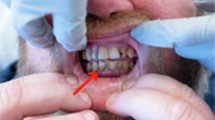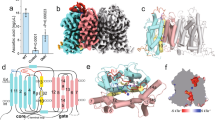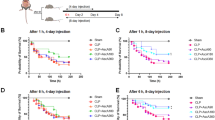Abstract
VARIOUS chemical and clinical observations have led to the assumption that ascorbic acid is accompanied in the cell by a substance of similar importance and related activity. In absence of both substances, the symptoms of lack of ascorbic acid (scurvy) prevail and conceal symptoms of the deficiency of the second substance. In the lack of suitable experimental animals or conditions, progress was dependent on spontaneous pathological conditions, caused or influenced by this second factor.
This is a preview of subscription content, access via your institution
Access options
Subscribe to this journal
Receive 51 print issues and online access
$199.00 per year
only $3.90 per issue
Buy this article
- Purchase on SpringerLink
- Instant access to full article PDF
Prices may be subject to local taxes which are calculated during checkout
Similar content being viewed by others
Author information
Authors and Affiliations
Rights and permissions
About this article
Cite this article
RUSZNYÁK, S., SZENT-GYÖRGYI, A. Vitamin P: Flavonols as Vitamins. Nature 138, 27 (1936). https://doi.org/10.1038/138027a0
Issue date:
DOI: https://doi.org/10.1038/138027a0
This article is cited by
-
QTL mapping of flavanone glycoside accumulation in citrus
Tree Genetics & Genomes (2023)
-
Fisetin and Robinetin antiradical activity under solvent effect: density functional theory study
Journal of Molecular Modeling (2022)
-
Evaluation of antioxidant, anti-hemolytic, cytotoxic effects and anti-bacterial activity of selected mangrove plants (Bruguiera gymnorrhiza and Heritiera littoralis) in Bangladesh
Clinical Phytoscience (2020)
-
Physicochemical characterization of 3,6-diHydroxyflavone binding BSA immobilized on PEG-coated silver nanoparticles
Journal of Nanoparticle Research (2017)
-
Mechanism for Highly Efficient Non-Radiative Deactivation of Electronic Excitation in Rutin
Journal of Applied Spectroscopy (2016)



